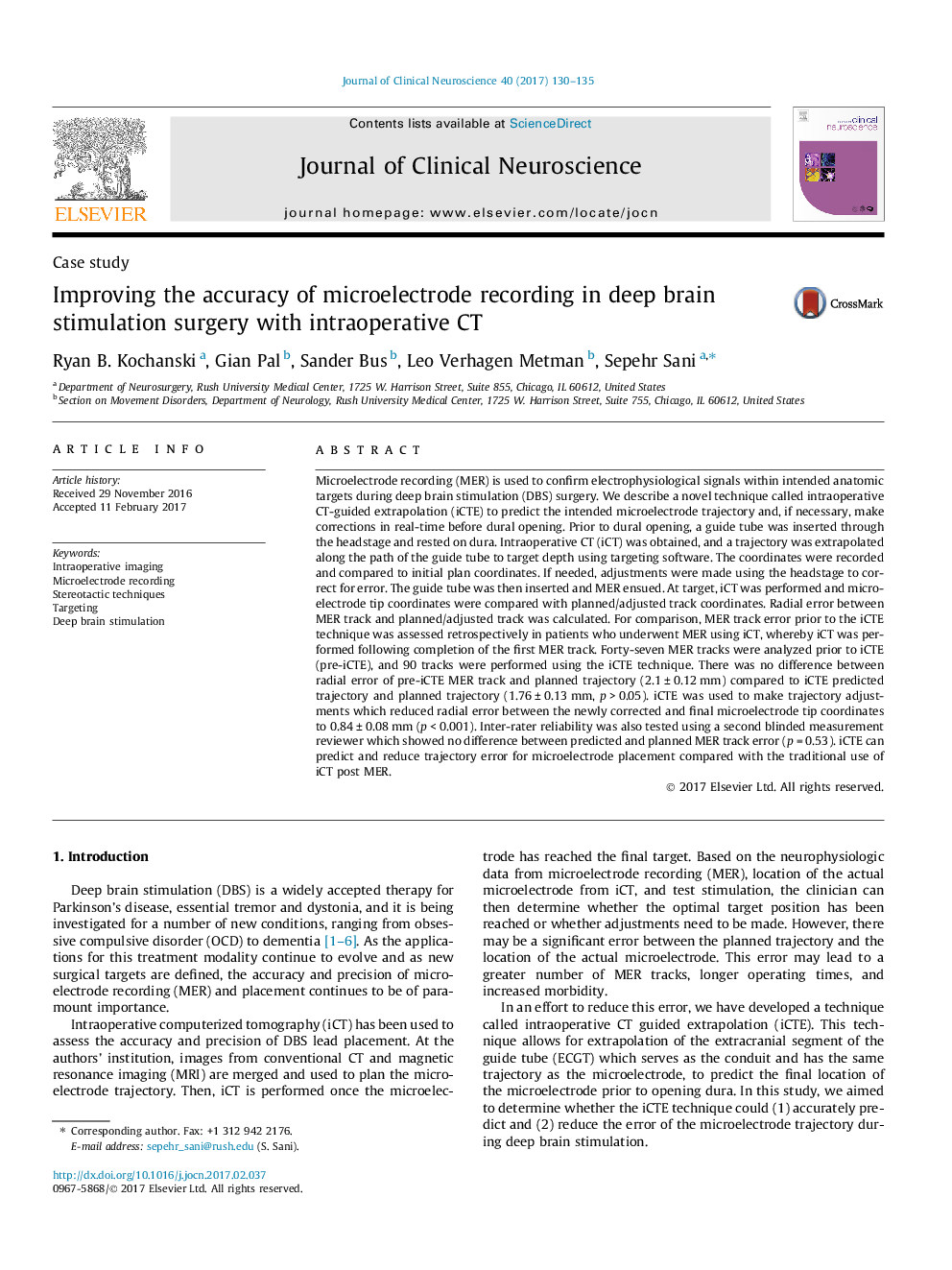| کد مقاله | کد نشریه | سال انتشار | مقاله انگلیسی | نسخه تمام متن |
|---|---|---|---|---|
| 5629713 | 1580276 | 2017 | 6 صفحه PDF | دانلود رایگان |

- iCTE allows for trajectory adjustments prior to dural opening.
- iCTE increases microelectrode targeting accuracy.
- Increased microelectrode accuracy may lead to fewer recording tracks.
Microelectrode recording (MER) is used to confirm electrophysiological signals within intended anatomic targets during deep brain stimulation (DBS) surgery. We describe a novel technique called intraoperative CT-guided extrapolation (iCTE) to predict the intended microelectrode trajectory and, if necessary, make corrections in real-time before dural opening. Prior to dural opening, a guide tube was inserted through the headstage and rested on dura. Intraoperative CT (iCT) was obtained, and a trajectory was extrapolated along the path of the guide tube to target depth using targeting software. The coordinates were recorded and compared to initial plan coordinates. If needed, adjustments were made using the headstage to correct for error. The guide tube was then inserted and MER ensued. At target, iCT was performed and microelectrode tip coordinates were compared with planned/adjusted track coordinates. Radial error between MER track and planned/adjusted track was calculated. For comparison, MER track error prior to the iCTE technique was assessed retrospectively in patients who underwent MER using iCT, whereby iCT was performed following completion of the first MER track. Forty-seven MER tracks were analyzed prior to iCTE (pre-iCTE), and 90 tracks were performed using the iCTE technique. There was no difference between radial error of pre-iCTE MER track and planned trajectory (2.1 ± 0.12 mm) compared to iCTE predicted trajectory and planned trajectory (1.76 ± 0.13 mm, p > 0.05). iCTE was used to make trajectory adjustments which reduced radial error between the newly corrected and final microelectrode tip coordinates to 0.84 ± 0.08 mm (p < 0.001). Inter-rater reliability was also tested using a second blinded measurement reviewer which showed no difference between predicted and planned MER track error (p = 0.53). iCTE can predict and reduce trajectory error for microelectrode placement compared with the traditional use of iCT post MER.
Journal: Journal of Clinical Neuroscience - Volume 40, June 2017, Pages 130-135